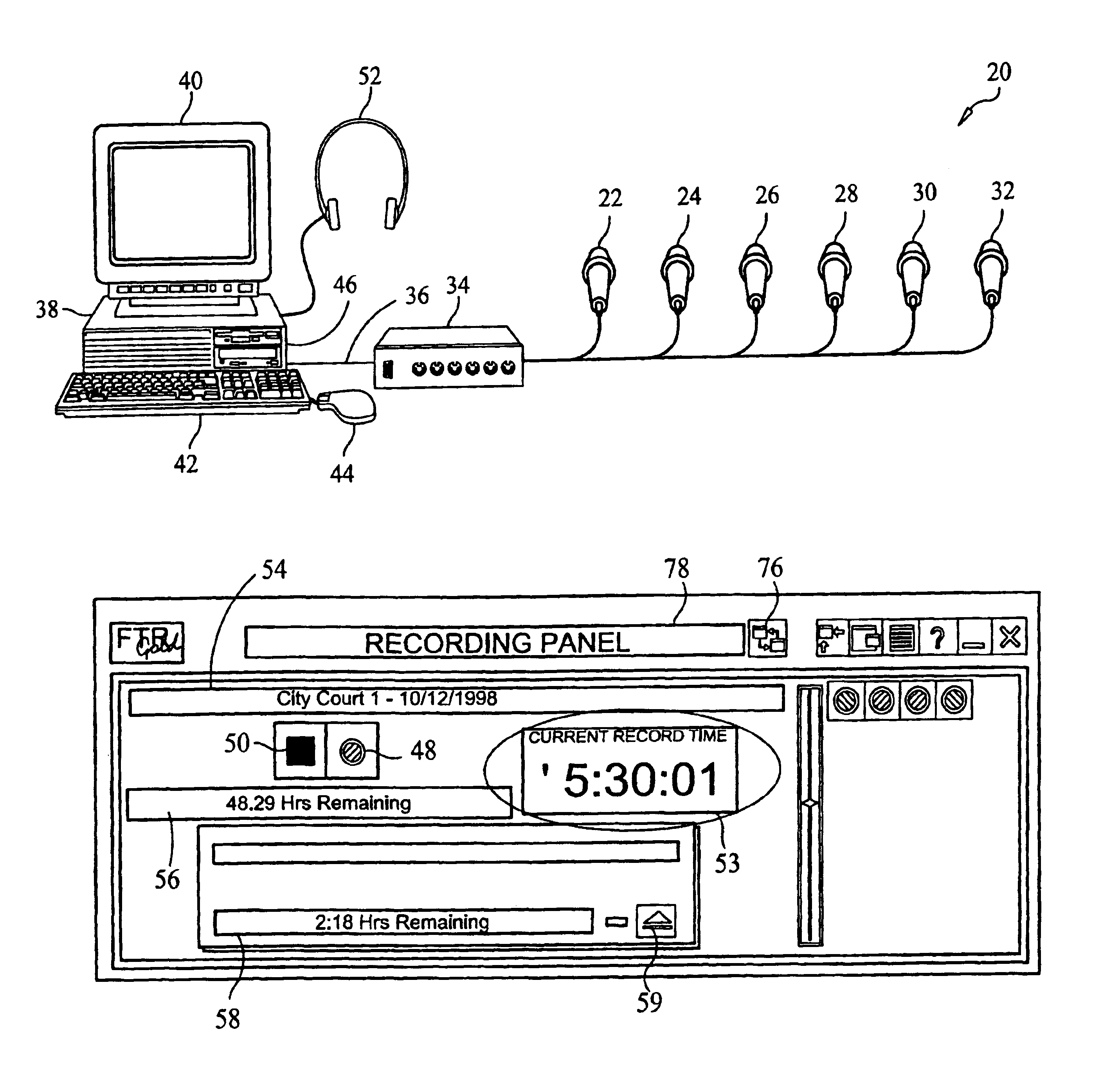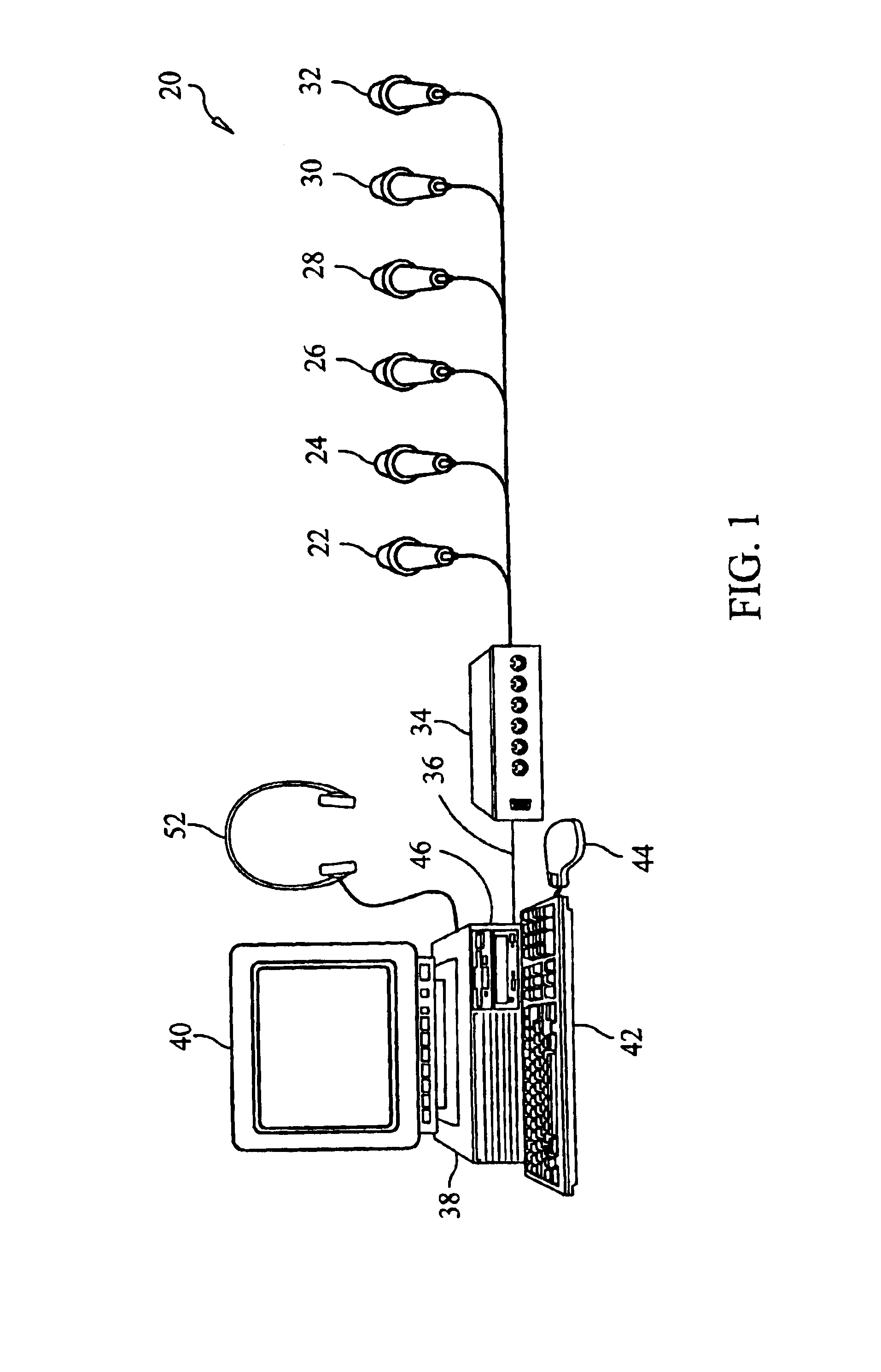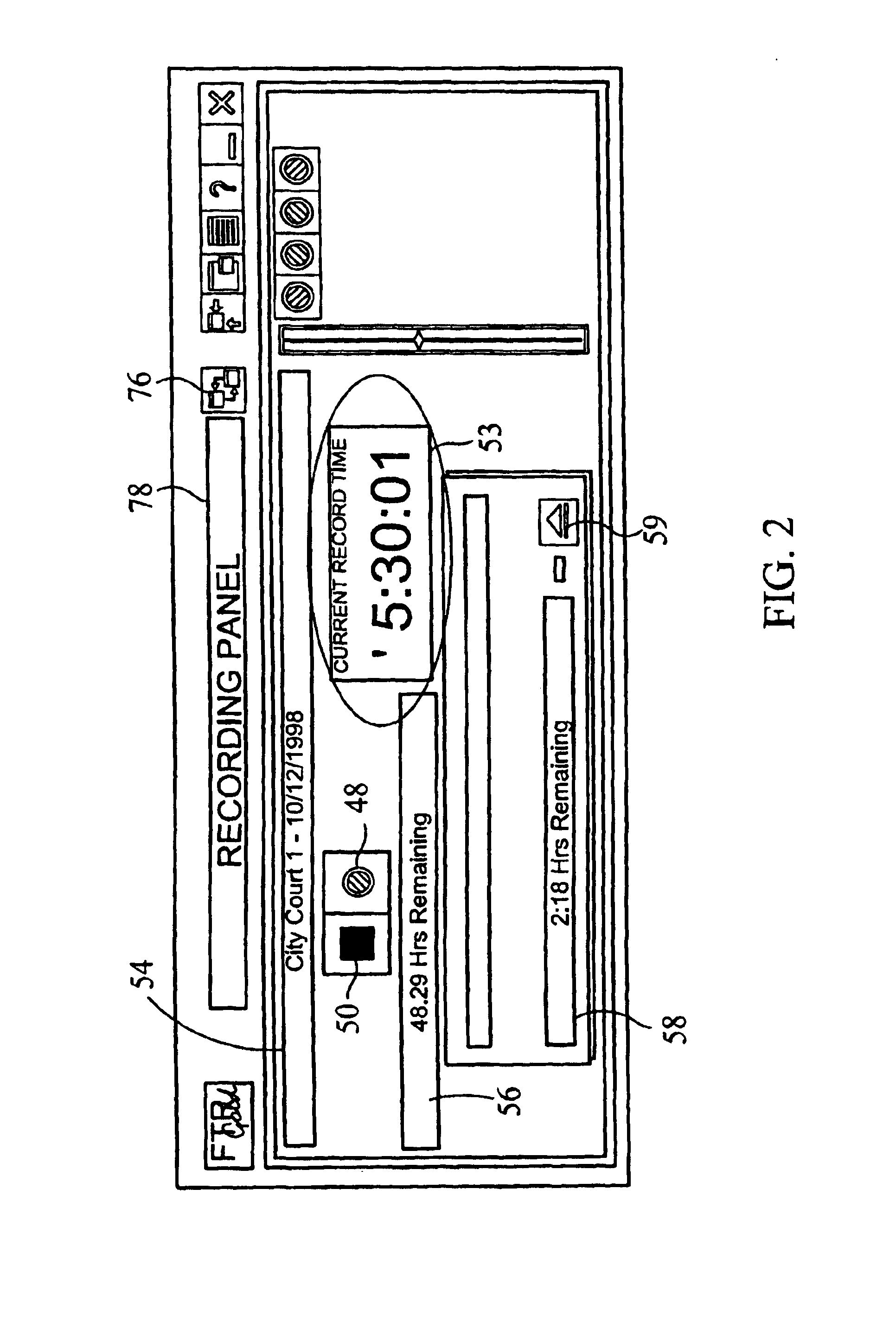In the preferred form of the present invention, each file segment has a maximum time length, for example, five minutes of recorded audio. The computer monitors the time length of each file segment being stored during a current recording session. If the time length of the current file segment reaches the maximum time length and recording has not been stopped, then the computer closes the currently opened file segment and immediately creates and opens a new file segment for storing additional portions of the current recording session. Thus, any recording session that exceeds the predetermined maximum time length results in the creation of at least two file segments. If, for example, the maximum time length is set to be five minutes, and a recording session lasts 48 minutes, then ten separate file segments will be created during such recording session, the first nine file segments each being five minutes in time length, and the tenth file segment being three minutes in time length. By limiting the time length of each file segment, the present invention lessens the likelihood that recorded
digital signal file segments might become damaged or corrupted, and minimizes the likelihood that other file segments might become corrupted; in other words, it isolates the corruption to a smaller amount of the total audio recorded.
As mentioned above, each file segment has a time and date associated therewith. Ideally, the time and date are associated with the file segment by incorporating such time and date information into the name of the file segment. Preferably, the file name also incorporates location information, such as the particular courtroom involved, to help distinguish transcripts that may have been made on the same date in two, or more different courtrooms. In addition, it is preferred that the time that is associated with such file segment is the exact time at which recording began for such file segment. The “.wav” files stored in such file segments are linear in the sense that the sounds recorded therein over a fixed period of time will always take up the same amount of file space, and two seconds worth of recorded sound will take up exactly twice the space as one second of recorded sound. Armed with the recording
start time of each file segment, the computer can easily detect discontinuities (indicating that a recording session starts at the beginning of a particular file segment, or that it stops at the end of a particular file segment) These start and stop points can be graphically displayed to a user on a playback screen in the form of
tick marks appearing on a graphical timeline; the graphical timeline represents the selected virtual file entry in the form of an entire day's worth of recording sessions on the desired date, and the
tick marks designate each point in time when recording was stopped and restarted.
Since the computer “knows” the time at which each file segment began recording, and since the computer “knows” the
fixed time rate at which “.wav” data is stored in each such file segment, the computer can easily locate a point in the selected transcript corresponding to any particular desired time of the proceedings. The computer can likewise locate any range of times within the recorded transcript as selected by the user. In this regard, the playback screen of the computer preferably includes a selection mechanism that allows the user to select a desired starting point and a desired ending point on the aforementioned displayed graphical timeline; this selection mechanism may simply be a conventional mouse pointer used to “click” on selected portions of the displayed graphical timeline. The computer is responsive to the selected starting point and ending point for creating a subset virtual file, the subset virtual file including only those file segments (or portions of file segments) which contain digital signals recorded between the selected starting point and selected ending point.
In order to help eliminate user
confusion as between confidence monitoring during recording, on one hand, versus actual playback on the other hand, the transcription
system of the present invention preferably uses two distinct and different panels or screens for controlling recording operations and playback operations, respectively. The two display screens each include a display control, or Panel Change, “button”, which may be graphically represented on the display screen, for toggling the display between the recording panel and the playback panel, depending upon whether a user desires to control recording operations or playback operations. The toggling of the display screen may result in the recording panel becoming more emphasized than the playback panel, or vice versa. Preferably, toggling the display screens actually makes one such screen disappear from view so that the user can only see one such display screen at a time.
When the recording panel is displayed, control buttons are displayed for controlling recording operations, such as the starting and stopping of a recording session. Ideally, the recording panel allows the user to activate a confidence monitoring feature whereby the computer accesses stored digital signals from memory shortly after they are stored during recording operations; these accessed digital signals are coupled to a digital-to-audio
converter circuit for converting the accessed digital signals to electronic audio signals. A sound generator, such as a
headset or earphone, coupled to the digital-to-audio
converter circuit then transforms the converted electronic audio signals into audible sounds for allowing the user to monitor the signals that have just been stored in memory in order to be confident that such digital signals are being stored reliably. On the other hand, when the playback panel is displayed, confidence monitoring is deactivated, and control buttons are displayed to
signal the computer to access stored digital signals for either playback or
copying. The displayed “buttons” are preferably analogous to those physical buttons one might find on an audio
tape recorder.
It should be noted that the transcription system of the present invention permits recording to continue even when the playback panel is displayed, so long as recording is not stopped in the record panel. The computer continues to store incoming digital signals provided by the analog-to-
digital converter circuit into the memory when the selected source of audio signals is to be recorded even when the computer screen is toggled to the playback panel. Moreover, playback of earlier recorded digital signals may take place concurrently with the recording of incoming digital signals in real time. The computer accesses the memory quickly enough so that accesses of previously stored digital signals do not interfere with the storage of new incoming digital signals.
 Login to View More
Login to View More  Login to View More
Login to View More 


